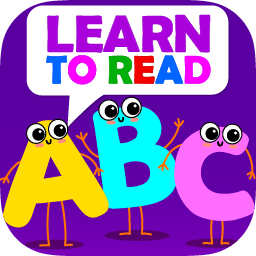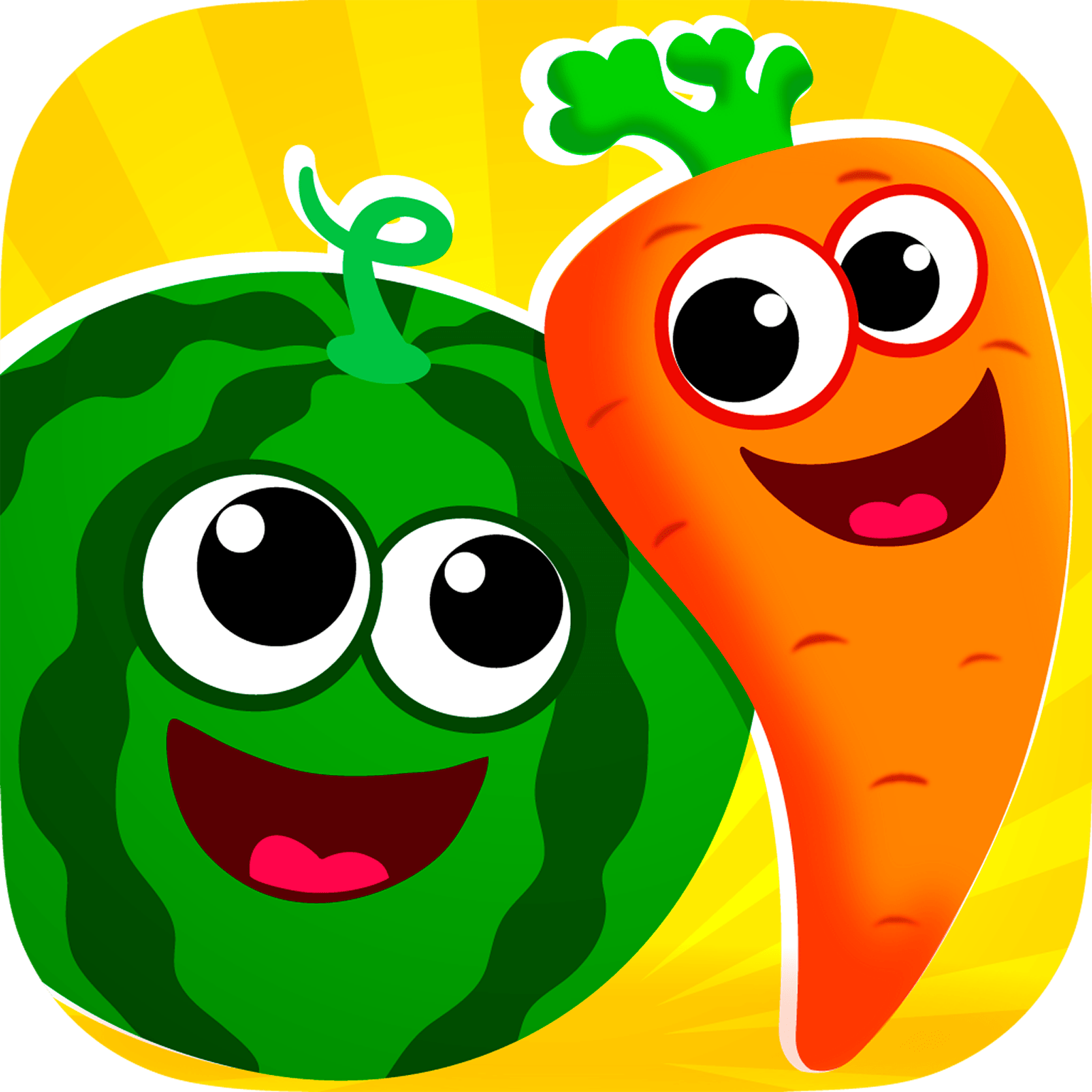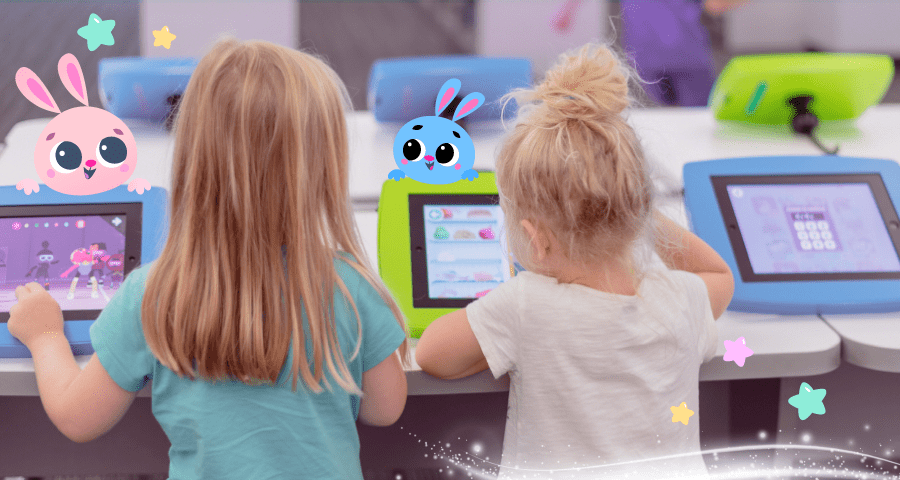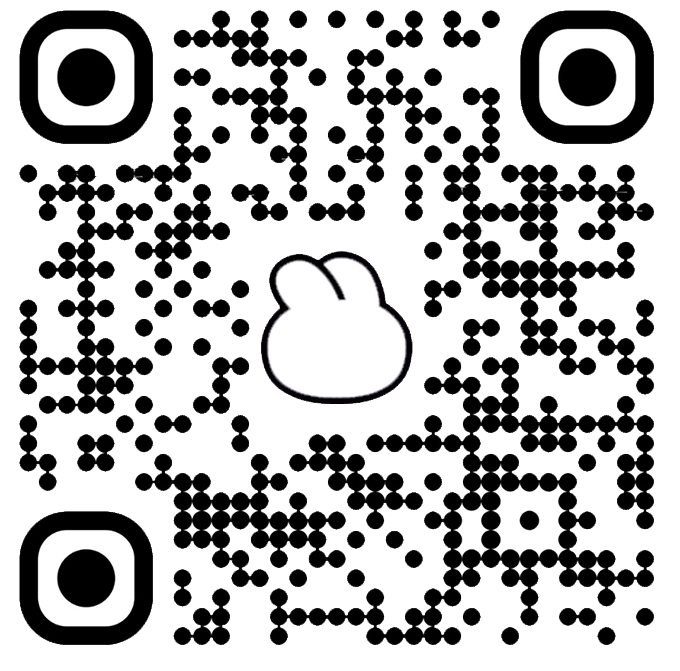Teaching little students to read can be both exciting and challenging. Some children struggle to connect sounds with letters, while others find it hard to blend letters into words. Some get frustrated easily, while others lose interest and don’t want to sit still long enough to practice. Busy schedules, sibling distractions, and finding the right approach for your child can make things even trickier.
In most cases, school or kindergarten lessons alone aren’t enough to fully develop reading skills. That’s why practicing at home is so important—it reinforces learning and helps turn reading into a confident, natural ability. But how do you make it work when your child resists, or when you’re already juggling so much? These simple steps can help make reading practice easier, more fun, and a stress-free part of your daily routine.
Step 1: How to Teach Kids to Read – Understanding Challenges

Before you start teaching your child to read, it’s helpful to know some common challenges they might face:
-
-
- Mixing up letters – Kids sometimes get confused with letters like ‘b’ and ‘d.’ If this happens, try pointing out these letters in everyday things—on cereal boxes, signs, or books. Or use a mirror to show how they look in different directions. This can help them grasp the distinction between these shapes more clearly.
- Matching sounds to letters – Try saying the sounds out loud during daily activities. For example, while cooking, you could say, “We’re making ssssspaghetti! What letter makes the ‘ssss’ sound?” You can also use picture books with phonics to help make the connection easier. Fluency with sounds can be crucial for early reading skills.
- Blending sounds into words – Sometimes kids can say the sounds in words like ‘d-o-g,’ but have trouble blending them together. To help, try activities like sliding toy cars together, saying each sound until they “crash” into a word. These activities involve both sound recognition and word formation, which is key to improving reading skills.
- Forgetting sight words – You can label things around the house, like putting ‘door’ on the door and ‘bed’ on their bed. Or use flashcards to play a matching game. This boosts vocabulary and helps build a stronger text comprehension.
- Reading words but not understanding them – If your toddler can read the words but doesn’t understand them, pause and ask questions like, “What do you think happens next?” Ask them to tell you the story in their own words to help with comprehension.
- Losing interest or getting frustrated – Some kids get upset with reading because it feels like a chore. Make reading fun by letting them choose books they love or acting out parts of the story. You can also create a cozy reading spot with their favorite toys. Playing with rhyme and rhythm can also help children stay involved and make reading more engaging.
-
Step 2: Teaching Children to Read – Sounds

Phonemic awareness is the foundation of reading. Start by helping your child recognize the sounds that make up words. Play listening games, sing songs, and practice breaking words into their individual sounds (e.g., cat = /c/ /a/ /t/).
Games to Try:
-
-
- Clap the Syllables – Say a word and clap out the syllables together. For example, “butterfly” would be “but-ter-fly” with three claps. Make it interactive by hopping, tapping on a drum, or using hand movements instead of clapping.
- Sound Treasure Hunt – Choose a sound, such as “s.” Have your kid search the room for objects that start with that sound (spoon, sun). Encourage them to say each word slowly and emphasize the starting sound.
-
Step 3: How to Help your Child Read – Alphabet
Introduce letters one at a time, starting with simple, frequently used ones like A, B, and C. Use flashcards, alphabet puzzles, and fun activities to make letter recognition engaging.
Games to Try:
-
-
- Alphabet Puzzle Race – Time your little one while they complete an alphabet puzzle. You can challenge them to beat their own time or race against a sibling or friend for added excitement.
- Shaving Cream Letters – Spray shaving cream on a tray and let your kid write every letter with their fingers. This sensory activity makes learning feel like play while strengthening fine motor skills.
-
Step 4: Uppercase and Lowercase Letters
Some kids get confused between uppercase and lowercase letters. Teach them through matching games and by pointing out letters in books or around the house. Writing both forms helps solidify the connection.
Games to Try:
-
-
- Letter Match-Up – Write uppercase and lowercase letters on index cards and mix them up. Have your child match them correctly. To add a fun twist, hide the cards around the room and make it a “letter detective” game.
- Letter Sorting – Use magnetic letters and ask your toddler to separate uppercase and lowercase letters into two different bowls. Then, have them match lowercase letters with their uppercase partners.
-
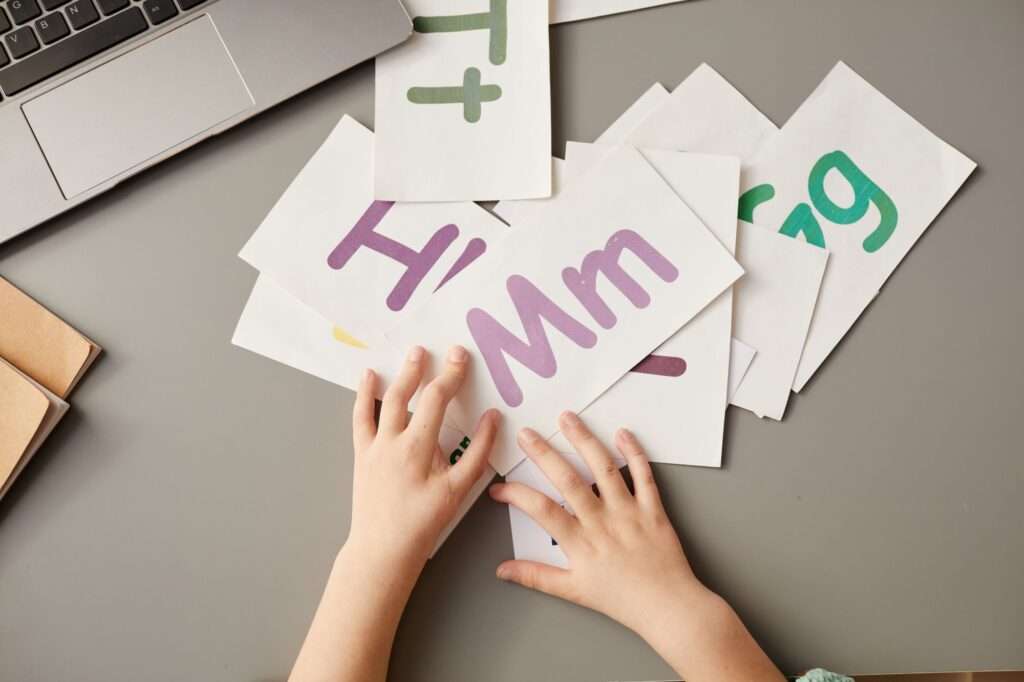
Step 5: How to Teach My Toddler to Read – Letters + Sounds
Once your little student knows the letters, help them match sounds to each letter. Practice with simple words like ‘hat,’ emphasizing the letter-sound connection. Reading rhyming books can also strengthen this skill.
Games to Try:
-
-
- Sound Bingo – Create a bingo board with letters. Call out words, and your kid must find and cover the letter that matches the beginning sound. Example: If you say “sun,” they would cover the letter “S.”
- Letter Fishing – Write letters on small paper fish and place them in a pretend “pond.” Use a toy fishing rod (or make one with a string) to fish for letters. Ask your child to say the letter name and sound when they catch one.
-
Step 6: How to Teach Reading to Preschoolers – First Words
Start with short, easy-to-read words like ‘sun,’ and ‘big.’ Use phonics-based books and interactive games to help children blend sounds together.
Games to Try:
-
-
- Word Hopscotch – Draw a hopscotch board and write simple words in each square. As your child hops, they must say the word out loud before moving to the next square.
- Build-a-Word – Give your child letter tiles or magnetic letters to create simple words. Start with three-letter words like “dog” or “hat” and gradually introduce more challenging words.
-
Step 7: How to Teach a Kid to Read at Home – First Sentences

Once your child is comfortable with basic words, introduce simple sentences. Books with repetitive sentence patterns, such as “The dog is big,” help children build confidence.
Games to Try:
-
-
- Sentence Building Blocks – Write words on blocks and help your child form simple sentences. Start with basic phrases like “I see a dog” and let them rearrange the blocks to make new sentences.
- Sentence Puzzles – Write a short sentence on a strip of paper, then cut it into separate words. Have your child put the words in the correct order to rebuild the sentence.
-
Step 8: Fluent Reading and Discussions
As your child becomes more fluent, encourage discussions about what they’ve read. Ask open-ended questions like “What happened in the story?” or “Why do you think the character did that?” This helps with comprehension and critical thinking.
Games to Try:
-
-
- Story Sequencing – Print pictures from a story and have your child arrange them in the correct order. Then, ask them to retell the story using the images as a guide.
- Question Toss – Toss a ball back and forth while asking questions about a story. Each time your child catches the ball, they must answer a question before throwing it back.
-
Step 9: Best Way to Teach a Child to Read – Dyslexia Challenges
If your child struggles significantly with reading, dyslexia could be a factor. Signs include difficulty recognizing letters, slow reading progress, and trouble with rhyming words. If you suspect dyslexia, consult a specialist and use multi-sensory reading strategies to provide extra support.
Games to Try:
-
-
- Multi-Sensory Writing – Have your preschooler trace letters in sand, shaving cream, or textured fabric. This strengthens memory by engaging multiple senses.
- Rhyming Word Match – Lay out cards with different words. Have your child find rhyming pairs (like “cat” and “hat”) to improve phonemic awareness.
-
Step 10: Be a Reading Role Model
Little ones learn by parent’s example, so show them that reading is enjoyable! Read books yourself and talk about what you’re reading. Creating a family book club or bedtime story tradition can make reading a special activity.
Games to Try:
-
-
- Reading Relay – Take turns reading a sentence or paragraph aloud. This builds confidence and makes reading a shared experience.
- Act It Out – Choose a favorite story and act out scenes together. This makes stories more engaging and brings characters to life.
-
Interactive Reading App: Fun Ways to Learn
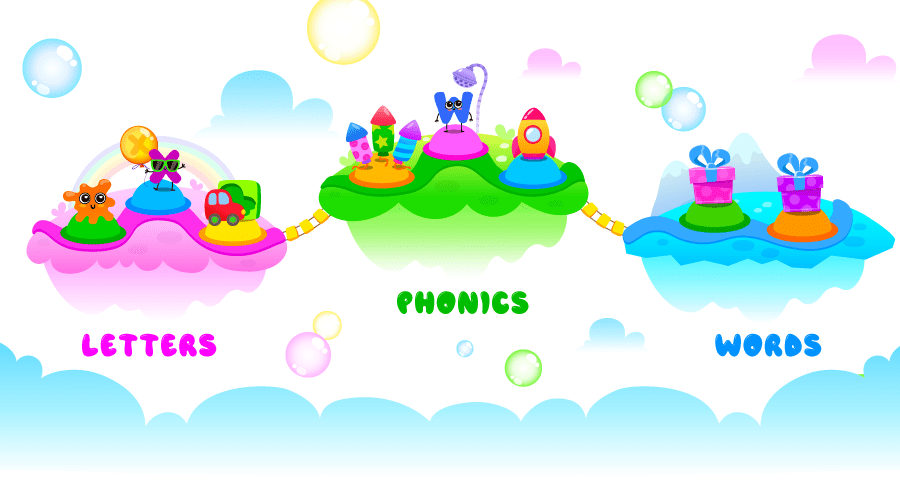
Interactive games are a fantastic way to support your child’s reading at home, no matter their age. These games make learning fun and help strengthen those important reading skills. With our best educational apps, you can give your child the tools they need to practice letters, sounds, and words—all while turning the learning process into play instead of a chore.
Every step of our educational apps makes learning letters, sounds, and first words super easy and fun! Through exciting activities, your child will discover how sounds connect to letters and form words—all while playing with animated Live Letters and solving puzzles.
Try our reading apps today and help your child build strong reading skills through play!




